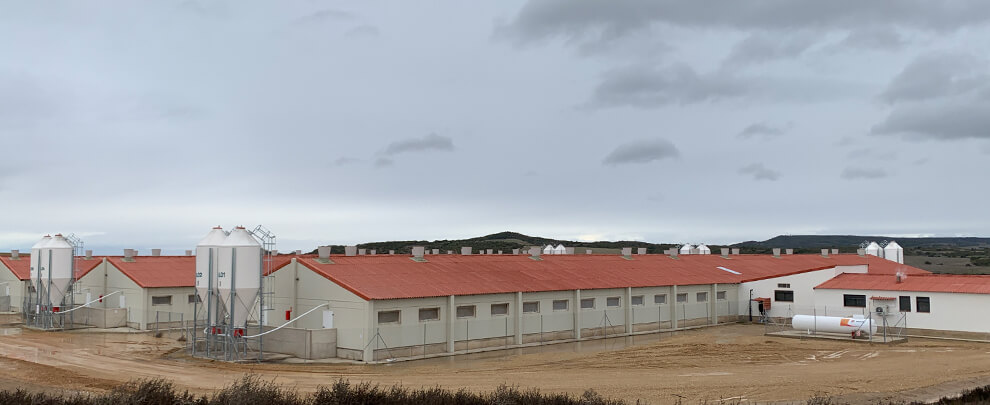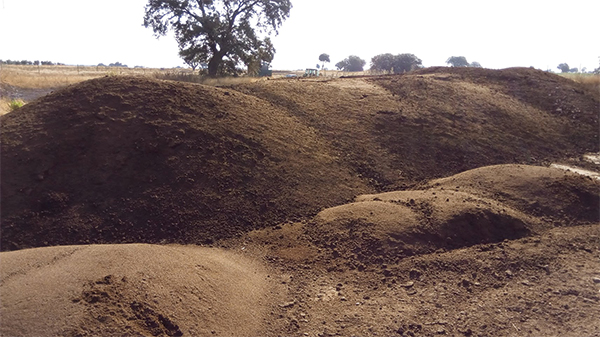Blog
Blog

What benefits does acidification of slurry bring to our farms?
18th February 2025 - News
With years of experience in the fertilisation sector, Fertinagro has been studying and developing on-farm slurry acidification projects for more than a decade. To improve the sanitary status inside the warehouses and the revaluation of the slurry in its subsequent application to the field, acidification is presented as one of the best solutions. We spoke with Ignasi Salaet, deputy director of the R+D+i department at Fertinagro Biotech.
How long have you been working on the acidification of slurry?
We have been working on acidification projects for more than 10 years and have begun to develop intensive work in this area. Beyond the laboratory, we have been developing firm projects inside pig farms for about four and a half years. The truth is that, initially, we considered acidification, beyond slurry management, as a health issue to reduce ammonia emissions inside the warehouses and the health problems that this entails, for example, in the fight against respiratory diseases such as PRRS. Ultimately, we are a fertiliser company, so we also think about how to treat the slurry and its subsequent reuse as organic fertiliser.
How do you work on the acidification on the farm?
We apply acidification inside the houses, which is a little more complex than outside since the environment is different and significant amounts of acid must be handled in a space with live animals. However, by carrying out this action inside, the environmental conditions of the buildings improve, and the risks of suffering from certain airborne diseases are reduced.
What is acidification for those who still need to get involved with this technology?
It is a simple process. Ammonia is a substance in a slurry that, depending on the pH, is in ionic form, so it remains in liquid, or gas, with what it emits into the air. So, what we try to achieve with acidification directly in the pits is to lower from a pH of between 8.5 and 9, which the slurry can have inside the farm, to a pH of 5, and, in addition, to make it not in gaseous form, but in ionic form, which helps us to retain the nitrogen in the slurry, something that will mean an added value in its possible use as fertiliser.
What are the main benefits of slurry acidification?
The main benefit is the retention of ammonia since it is not emitted into the environment, and we eliminate it from the production area, in addition to retaining nitrogen in the slurry, which, as we have mentioned, increases its value as a fertiliser. Another benefit is the reduction in greenhouse gas emissions. When you reduce the pH below 4.5, methane production is reduced, which also influences the value of the organic matter in the slurry. Finally, a third benefit, although this depends more on the type of acid used, is that we are introducing sulfate into the slurry, essential for the proper functioning of nitrogen in the field, which increases the fertiliser value of the slurry.

The treatment and management of slurry are challenges for the pig sector. Photo: Rotecna.
Is acidification a tremendous economic investment for the farmer?
There are two types of investment here: one thing is the fungible cost, and the other is all the instrumentation necessary for acidification. As for the cost of acid, which is the one I know most professionally, the good news is that we work with a urea inhibitor inside the warehouses, which reduces acid consumption by almost 90% and, therefore, the costs of acidification. For example, on a farm with 2,000 fattening places, the costs of acidification products are about 1,500 euros per year, an acceptable cost. However, apart from this, we have all the necessary instrumentation. There is a very technological one that allows total control of the acidification process, but it can have a higher cost. In this sense, some investments range between 15,000 and 18,000 euros for a house of 1,000 pigs. Despite everything, as we have observed in our work in different projects in Catalonia and Aragon, with farmers and veterinarians, they all agree in highlighting the benefits of acidification, with a reduction in greenhouse gas emissions, an improvement in animal welfare, better conversion rates in production and a reduction in the use of antibiotics. So, there is a clear return on investment.
We have mentioned that most of the projects were initiated mainly due to a health concern inside the farms, but in the end, you are a fertilisation company. What are the benefits of acidification in the subsequent use of slurry as an organic fertiliser?
As a fertiliser company that invests in R+D, we have carried out different tests to demonstrate what we more or less already thought was evident: the slurry resulting from acidification is better than untreated slurry. It is for several reasons: it contains more nitrogen, although this can be a double-edged sword because, in the end, you have a maximum amount of nitrogen to apply to the soil; it contains a more significant amount of organic matter and also sulphur, essential for the proper functioning of nitrogen in the soil. Another critical point is the application of slurry and the application system that now, by law, is with hanging tubes, which deposits the slurry on the surface, so with an alkaline pH and on a wide surface, a lot of nitrogen is lost: this is significantly reduced if the slurry is acidified. By applying this slurry as an organic fertiliser with more nitrogen and the presence of sulphur, cereal production in winter increases between 15-20% compared to other fertilisers.
What other business challenges are you working on to improve slurry fertilisation?
Generally, large fertiliser companies have mines or gas; that is, they have the raw material. We have neither one nor the other, so we have specialised first in the circulation of nutrients and then in making them efficient, and this is where we enter the world of biostimulants. In this sense, as we could not bring all the slurry to the factory, we decided to take the opposite route: develop a biostimulant and transport it to the farm to apply it to the slurry there. Specifically, we have two patents for biostimulant products injected directly into slurry, increasing productivity added to acidification. In other words, with the application of slurry with biostimulants, we achieve 15% more production in the field, which is added to the other 15% that we already had with the application of slurry treated by acidification.
Is acidification a feasible present and future solution in managing slurry on pig farms?
The treatment and handling of slurry is undoubtedly challenging for the entire sector. Many techniques can be used to recover nitrogen from slurry; there are different MTDS on the market, and, in our case, due to our know-how, we have made a strong commitment to acidification and the application of biostimulant products, as we believe that it works and at an affordable price, with a highly positive return. What is certain is that acidification has many advantages, such as reducing emissions, improving pig production, and the subsequent reuse of slurry as fertiliser.








